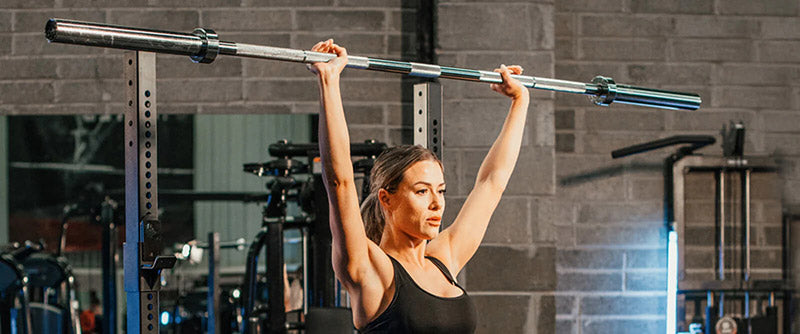Barbells are an essential piece of gym equipment for anyone who is into strength training, whether you're a beginner or an experienced lifter. However, when it comes to choosing the right barbell for your needs, there are many factors to consider, like, whether to go with a 7ft or 6ft barbell, or choosing between a home barbell and a commercial barbell.
We'll take a closer look at the differences between these two types of barbells to help you make an informed decision.
What is a Barbell?
A barbell is a long metal bar that is used in weight training exercises such as squats, deadlifts, and bench presses. It typically has sleeves on each end that can hold weight plates.
What is a 7ft Barbell?
A 7ft barbell, also known as an Olympic barbell, is the standard size for barbells used in weightlifting competitions. It is typically made from steel or another durable metal and is 2.2 meters long and weighs 20kg. The sleeves on each end are 16.5 inches in length, which provides enough space to hold several weight plates.
What is a 6ft Barbell?
A 6ft barbell is a shorter version of the 7ft barbell. It’s also lighter, weighing usually 15kg. They are typically used for exercises that require a smaller range of motion, such as biceps curls and triceps extensions. It is the ideal barbell for home gyms or for people who have limited space. The sleeves on each end are usually shorter as well, which means that you can't load as much weight on the bar.
Which Barbell Should You Choose?
The answer to this question depends on your individual needs and preferences. If you're serious about weightlifting, a 7ft, 20kg Olympic barbell is the way to go. It can hold more weight and is the standard size for competitive lifting. However, if you're just starting out or have limited space, a 6ft barbell is a great option. It's more affordable and easier to manoeuvre, making it ideal for home gyms.
Differences between commercial and home barbells
The main difference between commercial and home use barbells lies in their design, durability, and price.
Commercial barbells are designed to withstand heavy use and abuse in a busy gym or fitness centre. They are typically made from high-quality materials such as chrome-plated steel or stainless steel, and are built to last for many years of regular use. They are also often rated for a higher weight capacity than home use barbells, usually ranging from 340kg to 600kg.
Home use barbells, on the other hand, are designed for occasional or light use in a home gym setting. They are typically made from lower-grade materials such as plain steel, and are not built to withstand the same level of wear and tear as commercial barbells. They are also generally rated for a lower weight capacity, usually ranging from 130kg to 340 kg.
Semi-commercial barbells are designed mainly for home gym users or personal trainers, and are a great option for those interested in acquiring a durable and robust gym equipment without paying for high-end commercial equipment. However, bear in mind that may not be able to withstand the intensity of a commercial gym.
Squat Bar
A squat bar is a type of barbell that is specifically designed for squatting exercises. The main benefit of a squat bar is that it distributes the weight more evenly across your shoulders, back, and hips. This makes it easier to maintain good form during the squat and reduces the risk of injury.
Some other exercises that can be performed with a squat bar include lunges, step-ups, and Bulgarian split squats.
Hex or Trap Bar
A hex or trap bar is a hexagonal-shaped barbell that has handles on each side. The handles are positioned at a 90-degree angle to the body of the bar, which allows you to stand inside the bar and lift the weight from a more neutral position.
The main benefit of a hex or trap bar is that it allows you to perform exercises such as deadlifts and shrugs with better form and less strain on your lower back.
Some other exercises that can be performed with a hex or trap bar include farmer's walks, overhead presses, and rows.
Used with Weight Plates the barbell will help you reach your training goals whether you intend to build muscle or tone up! Use with a Weight Bench and a Power Rack to perform a wide variety of exercises like bench press, squats, dead lifts, and more.










